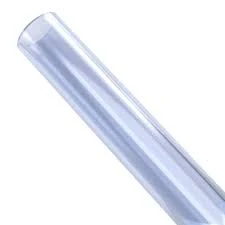Dec . 10, 2024 09:43 Back to list
polypropylene cutting board safe
The Safety of Polypropylene Cutting Boards A Comprehensive Overview
In any kitchen, the choice of cutting board material is crucial not only for food preparation efficiency but also for food safety. Among the various options available, polypropylene cutting boards have been gaining popularity due to their unique properties that make them a safe choice for culinary tasks. This article will explore the safety features of polypropylene cutting boards, their advantages over other materials, and best practices for maintaining hygiene.
Understanding Polypropylene
Polypropylene is a thermoplastic polymer that is widely used in various applications, including packaging, textiles, automotive components, and kitchenware. Its popularity in the food industry, especially in the form of cutting boards, can be attributed to its many beneficial properties. Polypropylene is lightweight, durable, and resistant to moisture, making it an ideal choice for a kitchen environment where sanitation is a top priority.
Safety Features of Polypropylene Cutting Boards
One of the primary concerns when selecting a cutting board is the risk of bacterial contamination. Polypropylene cutting boards are non-porous, meaning they do not absorb liquids and are less likely to harbor bacteria compared to wooden boards. This characteristic contributes significantly to food safety, as harmful microorganisms can easily multiply in cracks and grooves found in wooden boards or other porous materials.
Moreover, polypropylene is dishwasher-safe, allowing for high-temperature cleaning—effectively eliminating germs and bacteria. Most leading manufacturers recommend washing polypropylene cutting boards in the dishwasher after each use, ensuring they are sanitized and safe for food preparation. This feature is particularly significant when working with raw meats and other potentially hazardous foods.
Advantages over Other Materials
When compared to other cutting board materials, polypropylene stands out for several reasons. Traditional wood cutting boards have been favored for their aesthetic appeal and knife-friendly surfaces. However, they have certain downsides, such as the need for regular oiling and the risk of cracking or warping. On the other hand, glass and bamboo boards can be less forgiving on knife edges, often causing dulling and requiring more frequent sharpening.
Polypropylene cutting boards provide a balanced solution. They are gentler on knife blades than glass and do not require the maintenance that wood does. In addition, the vibrant colors in which polypropylene cutting boards are available can add a touch of personality to your kitchen while also allowing for color-coded food preparation. By using different colored boards for different food groups—such as red for meats, green for vegetables, and yellow for poultry—you can significantly reduce the risk of cross-contamination.
polypropylene cutting board safe

Best Practices for Use and Maintenance
To ensure that your polypropylene cutting board remains safe and effective, there are some best practices to follow
1. Regular Cleaning Always wash your cutting board after each use, particularly after cutting raw meats. Hot water and mild soap are typically sufficient; however, using the dishwasher is the most effective method for sanitizing.
2. Avoid Cutting on the Same Surface Use separate boards for different food types to minimize cross-contamination. This practice not only promotes hygiene but also prevents the transfer of flavors.
3. Inspect for Damage Regularly check your cutting board for deep scratches or cuts. If the board is excessively damaged, it may be time to replace it, as these imperfections can harbor bacteria.
4. Avoid Storing Wet Always dry your cutting board thoroughly before storing it. While polypropylene is resistant to water, prolonged moisture can create an environment for bacterial growth.
5. Avoid High Heat Do not use polypropylene boards for cutting hot items or exposing them to direct flames, as excessive heat can warp the material.
Conclusion
Polypropylene cutting boards offer a safe, practical, and sanitary option for food preparation in the kitchen. With their non-porous nature, dishwasher-safe properties, and resistance to bacteria, they present significant advantages over wooden and glass boards. By following proper care and maintenance practices, you can enhance the longevity of your cutting board, ensuring that it remains a reliable companion in your cooking endeavors. As the culinary world evolves, embracing the safety and convenience of polypropylene cutting boards is a step towards healthier food preparation.
-
Durable Glossy PVC Rigid Sheet | Premium High-Shine Panels
NewsAug.26,2025
-
Durable PP Rigid Sheet: Lightweight, Chemical Resistant Solutions
NewsAug.21,2025
-
PVC Grey Sheet for Extraction: Chemical Resistant & Durable
NewsAug.19,2025
-
Durable PVC Pipe Fittings for Plumbing & Irrigation Needs
NewsAug.18,2025
-
HDPE Steel Belt Reinforced Spiral Corrugated Pipe | High Strength
NewsAug.17,2025
-
HDPE Pipe Fittings: Durable, Leak-Proof Solutions
NewsAug.16,2025

